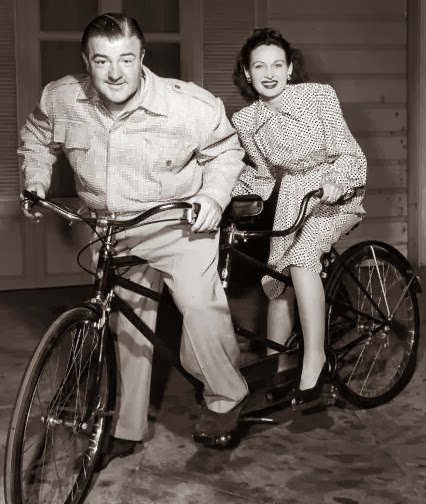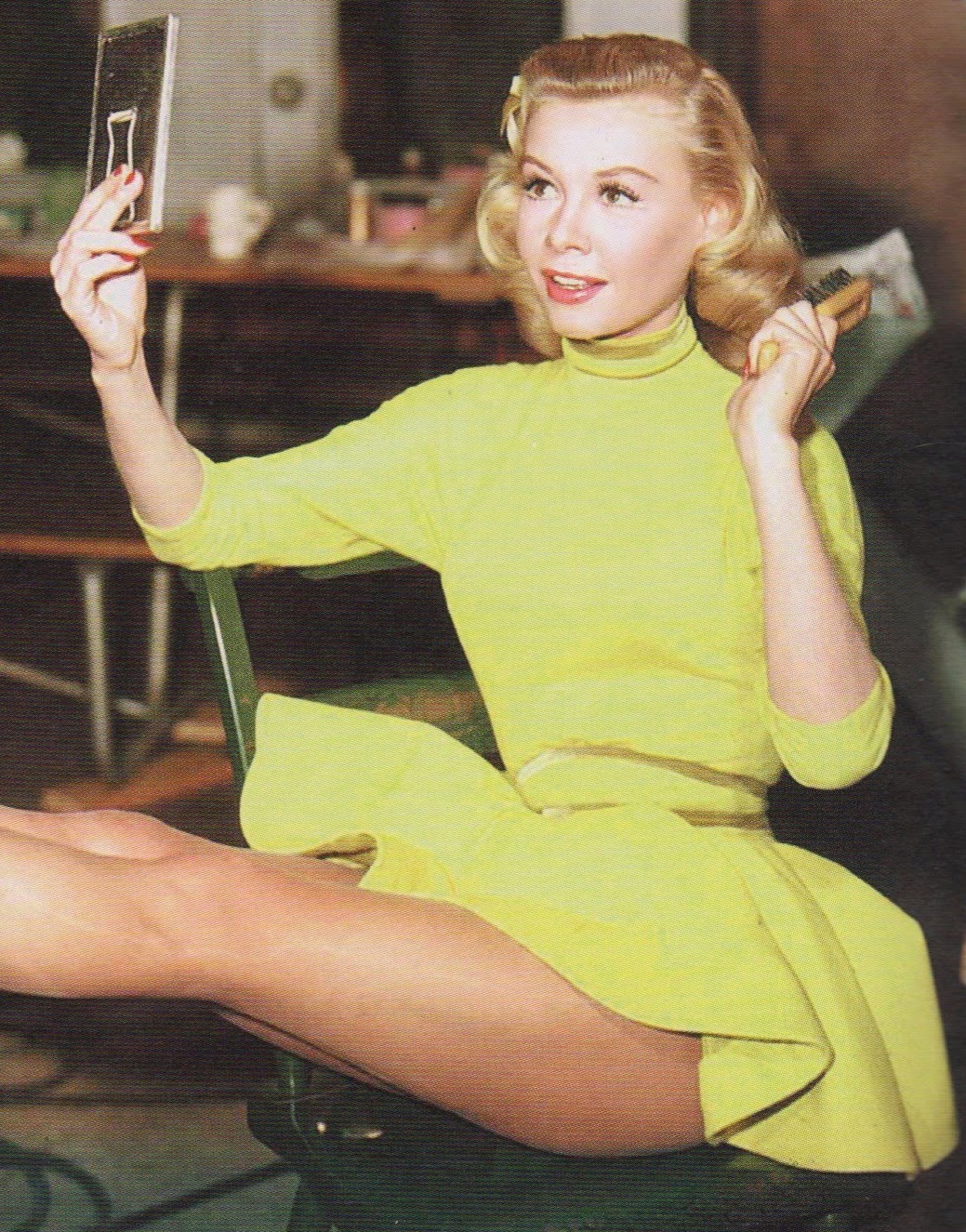
On this last day of November we celebrate what would have been the 94th birthday of actress Virginia Mayo. For a long time, I did not appreciate her as an actress, but taking a second look at her films, I realize she was a better actress than she was given credit for. Mayo was born Virginia Clara Jones on November 30, 1920 in St. Louis, Missouri, she was the daughter of newspaper reporter Luke and wife Martha Henrietta (née Rautenstrauch) Jones. Her family had roots running back to the earliest days of St. Louis, including great-great-great grandfather Captain James Piggott, who founded East St. Louis, Illinois in 1797. Young Virginia's aunt operated an acting school in the St. Louis area, which she began attending at age six. She was also tutored by a series of dancing instructors engaged by her aunt.
Following her graduation from Soldan High School in 1937, Virginia landed her first professional acting and dancing jobs at the St. Louis Municipal Opera and in an act with six other girls at the Hotel Jefferson. Impressed with her ability, her brother-in-law, vaudeville performer Andy Mayo, recruited her to appear in his act "The Mayo Brothers". Jones toured the American vaudeville circuit for three years serving as ringmaster and comedic foil for "Pansy the Horse" as the Mayo brothers performed in a horse suit. In 1941 Jones, now known by the stage name Virginia Mayo, got another career break as she appeared on Broadway with Eddie Cantor in Banjo Eyes.
In the early 1940s Virginia Mayo's talent and striking beauty came to the attention of movie mogul Samuel Goldwyn, who signed her to an acting contract with his company. One of her first films was the 1943 hit Jack London, which starred her future husband Michael O'Shea. Other roles soon followed as she became a popular actress who personified the dream girl or girl-next-door image in a series of films. A beneficiary of the Technicolor film process, it was said that audiences—particularly males—would flock to theaters just to see her blonde hair and classic looks on-screen. Her first starring role came in 1944 opposite comedian Bob Hope in The Princess and the Pirate. Remaining in the comedy genre, Mayo had several popular on-screen pairings with dancer-actor Danny Kaye, including Wonder Man (1945), The Kid from Brooklyn (1946), and The Secret Life of Walter Mitty (1947).
Going against previous stereotype, Mayo accepted the supporting role of unsympathetic gold-digger Marie Derry in William Wyler's drama The Best Years of Our Lives (1946). Her performance drew favorable reviews from critics as the film also became the highest-grossing film inside the United States since Gone with the Wind. At the zenith of her career, Mayo was seen as the quintessential voluptuous Hollywood beauty. It was said that she "looked like a pinup painting come to life". According to widely published reports from the late 1940s, the Sultan of Morocco declared her beauty to be "tangible proof of the existence of God."
She would continue a series of dramatic performances in the late 1940s in films like Smart Girls Don't Talk (1948). Virginia Mayo was a constant fixture in the movie theaters in 1949 as she co-starred in many movies all released that year. Among them were Flaxy Martin, opposite Joel McCrea in the western Colorado Territory, co-starred with future President Ronald Reagan in The Girl from Jones Beach, and with comedian Milton Berle in Always Leave Them Laughing. Mixing drama with comedy roles all year, Mayo received rave reviews for her performance alongside James Cagney and Edmond O'Brien in 1949's White Heat and received equally impressive reviews for her co-starring with George Raft in Roy Del Ruth's Red Light that same year. In a later interview Mayo admitted she was frightened by Cagney as the psychotic gunman in White Heat because he was so realistic. I think that is what made Virginia Mayo so popular; every role she was in – she made seem so realistic as well…














.jpg)



















